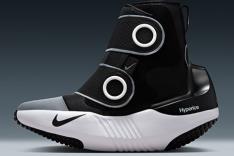
The Myth: One small crack and your carbon-fiber frame is destined for the landfill.
The Truth: As it turns out, carbon is eminently repairable. A cottage industry of repair specialists now works to save many bikes from the Dumpster.
What is Repairable?
According to Heather Ross, the former frame-repair service manager at Calfee Bicycles, in La Selva Beach, California, most damage can be fixed (like these 25 Simple Bike Repairs every cyclist should know). Calfee has mended more than 6,000 frames since 2003. Shawn Small, of Portland, Oregon-based Ruckus Components, who has fixed more than 200 bikes, agrees. "Pretty much anything can be repaired," he says, noting that the process of layering carbon, compressing the frame, and curing the new material is similar to the way new carbon bikes are made.
More: What to Do About a Defective Bike
This type of work is not limited to minor damage; the pros can fix tubes snapped through and frames snapped into multiple pieces. Bottom-bracket shells can be replaced; cable stops and front-derailleur braze-ons can be mended.
Repairs can be done on more than frames, too. Some companies will fix wheels as long as the brake track is not damaged. Liability concerns, however, seem to dissuade most companies from working on forks and handlebars.
Beyond repairing damage, the same techniques can be used to add carbon to a frame, for example, to lengthen an integrated seatmast, if you want to sell your frame to a taller friend.
There are some limits, though, especially when carbon dropouts are involved. Calfee doesn't touch carbon dropouts, but its crew can sometimes graft on new ones, along with stays from a compatible donor frame. (Perhaps USA Cycling should include a donor option line on racing licenses, in case of crash damage.)
More: Your Bike Was Mangled By a Car. Now What?
How is it Done?
"Technologically, there's nothing about carbon that takes special skill to repair," says Cervelo engineer Damon Rinard (read the Making of a Custom Carbon Fiber Road Bike to learn more). The procedure starts with removal of the damaged carbon. Next, the area surrounding the damage is sanded, tapering toward the missing fibers. New layers of carbon fabric are used to rebuild the affected area, then cured. Finally, the repair is sanded to match the original frame shape.
The greater challenge is restoring the original finish, and quality work can set better jobs apart. Typically, painted frames can be made to look close to what they did when new, for a (sometimes high) price. In other cases the repair is left unpainted, for a battle-worn look.
- 1
- of
- 2








Discuss This Article